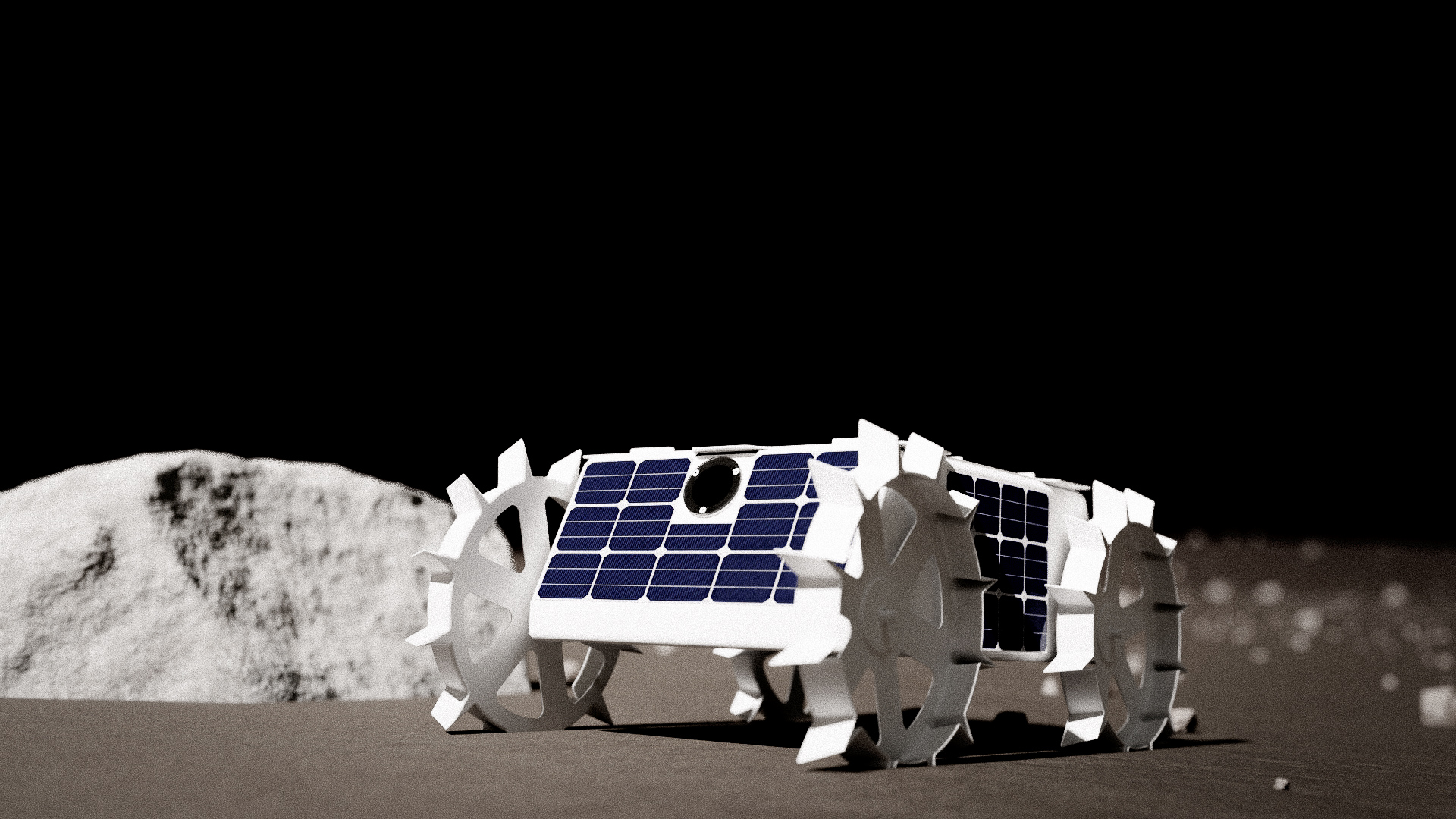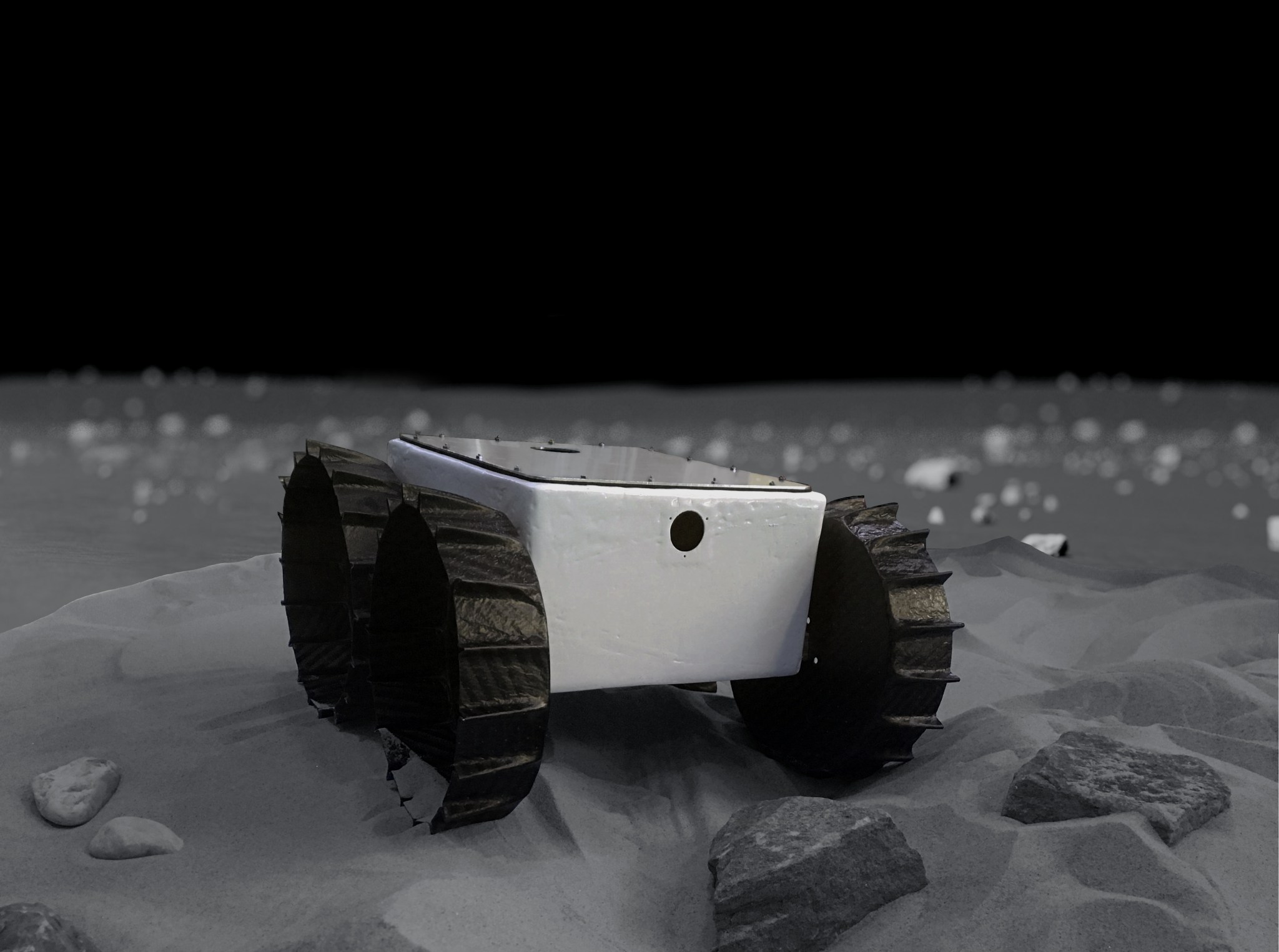By Jim Cawley
NASA’s Kennedy Space Center
A partnership involving NASA and a Pittsburgh-based space robotics company and university will let us explore the lunar surface in new ways. The project to develop a shoebox-sized rover is part of a multifaceted approach to mature commercial space capabilities that benefit future NASA missions under the Artemis program.
“One of the many benefits of this project is CubeRover will be solar-powered,” said Jim Mantovani, a senior physicist at NASA’s Kennedy Space Center in Florida who is part the Swamp Works team. “If it relied on just the battery, it would have to go back to the lander to recharge. So, this makes it a very versatile mobile platform.”
Working with Kennedy, Astrobotic started to apply the idea behind CubeSats — small, low-cost satellites built to standard dimensions — to develop commercial rovers as light as five pounds. The partnership began in August 2017 when Astrobotic received NASA funding through a Small Business Innovation Research (SBIR) contract to establish the technical merit of the concept. The company received a follow-on SBIR award for research and development.
“We are very interested in companies developing exploration technologies that are commercially viable,” said Mike Vinje, small business technology manager in the SBIR/Small Business Technology Transfer (STTR) Office at Kennedy. “Astrobotic was able to take the commercial potential of their NASA work and, along with the Swamp Works folks, really knock it out of the park.”
In September 2019, NASA’s Space Technology Mission Directorate awarded Astrobotic a $2 million Tipping Point award to ready CubeRover for the Moon. Partners include Carnegie Mellon University, Kennedy and NASA’s Jet Propulsion Laboratory in Pasadena, California.
According to Rob Mueller, a senior technologist and principal investigator for Swamp Works, capabilities being developed for CubeRover could be used to search for resources, map terrain or establish a communications relay on the Moon, Mars or an asteroid.
“We could also have two CubeRovers working in tandem or a swarm of them. We could send one into a permanently shadowed region of the Moon,” Mueller said. “Your risk posture changes. With high risk comes high reward, and this is the potential of CubeRover.”
As part of the Phase II SBIR work, which wraps up in mid-2020, the company will bring the first generation CubeRover to Kennedy’s Swamp Works. When it makes the trip from Pennsylvania to Florida, CubeRover will join RASSOR — the Regolith Advanced Surface Systems Operations Robot — in the lab. Robots like RASSOR and CubeRover may one day work together in other parts of the solar system, gathering resources for NASA missions.
“With these kinds of rovers, we could actually pinpoint where the large concentrations of water might be below the lunar surface,” Mantovani said. “If CubeRover can point to where there is water, then RASSOR could dig it up.”
While at Swamp Works, the rover will perform mobility tests in a bin filled with 120 tons of lunar regolith simulant. In the regolith bin, CubeRover will experience a high-fidelity simulation of operating on the lunar surface. The Astrobotic team will measure mobility and efficiency, closely monitoring scenarios such as: how much the rover sinks or slips into the regolith, how it navigates incline and decline slopes and how it handles encountering rocks.
“We are looking forward to getting some really relevant results,” said Mike Provenzano, the director of planetary mobility at Astrobotic. “Our team is so excited. We’d like to thank Kennedy and NASA for believing in this mission with us.”
NASA’s Moon to Mars exploration approach includes innovative new partnerships, as the agency looks to expand its capabilities in space. Astrobotic is one of nine U.S. commercial providers on contract under NASA’s Commercial Lunar Payload Services project to bid on opportunities to deliver NASA payloads to the Moon.
Astrobotic was one of 14 companies NASA selected for a Tipping Point award this year, and the company’s project will start in March 2020, running for two years.
“That’s why we like this project so much — this is a model for NASA’s future,” Mueller said. “NASA develops technologies, commercial industry puts them into the marketplace, and ultimately the U.S. economy benefits.”
























